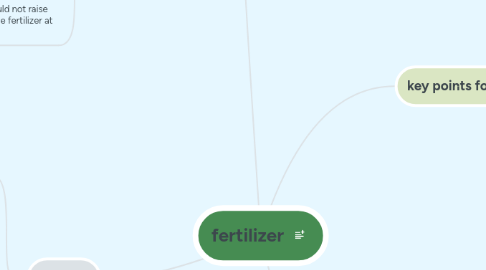
1. countries
1.1. Kenya (Source B)
1.1.1. Partial adopters are better off than non-adopters only at the lower end of yield distribution.
1.1.2. In Kenya, which is heavily dependent on maize as a food staple, the question of fertilizers is at a government level.
1.1.3. Agricultural technologies yield best results when they are taken up as a package rather than as individual elements.
1.1.4. For most sub-Saharan African countries, the adoption of sustainable agricultural practices is the most pragmatic option for achieving economic growth, food security and poverty alleviation.
1.1.5. Kenya unlike US shows low adoption rates of improved maize varieties and fertilizers (Dorfman 1996), as the United States that have fully adopted high yielding varieties (HYV).
1.1.6. In Kenya adoption patterns vary from season to season.
1.1.7. Fertilizer application is beneficial to farmers with high soil organic matter (SOM).
1.1.8. On average, the package adopters are 230 kg of maize yield better off than the nonadopters. (per season)
1.1.8.1. This translates into over 500 kg for areas that enjoy two cropping seasons, which is a significant contribution to food security at both household and national levels.
1.2. Ethiopia
1.2.1. Dercon and Christiaensen (2007) find that poor harvest and subsequently low consumption could lead to low fertilizer application in Ethiopia.
1.3. India (Semi-Irid tropics), Source A
1.3.1. Farmers don’t want to implement new production techniques as they are afraid of risks (“is the well- documented risk aversion on the part of rural decision makers in developing countries”).
1.3.2. In India agricultural production in the semi-arid tropics is characterized by two main growing seasons: rainy (kharif) and post-rainy (rabi) seasons.
1.3.3. Weather is a major source of the uncertainty surrounding the production environment and can be summarized by the timing and amount of rainfall.
1.3.3.1. BUT: Weather uncertainty is less important for output the greater the level of irrigation.
1.3.4. In the mid 1970s only 20% of the farmers in Aurepalle and 50% of the farmers in Kanzara used fertilizer on their fields. By 1984, almost 75% of the farmers in Aurepalle and over 90% of the farmers in Kanzara used some chemical fertilizer.
1.3.5. Off-farm labor is an important tool to smooth the income, and , there should be significant interactions between fertilizer use and off-farm labor supply.
1.3.6. Own-farm labor and fertilizer are widely viewed as complementary in production.
1.3.7. Conclusion: there are nonlinear relationships for fertilizer demand which depends on the parameters of production technology and utility function.
1.4. Indonesia (Source C)
1.4.1. The contribution of new seed-fertilizer technology has showed the rapid increase of production and productivity in Indonesian rice agriculture since the 1960s.
1.4.2. There are 2 types of rice: awnless and awned paddy.
1.4.3. Fertilizing required an extra effort from farmers.
1.4.4. Most farm households could not raise enough money to purchase fertilizer at some point.
2. Sources
2.1. A: "Fertilizer Use, Risk, and Off-Farm Labor Markets in the Semi-Arid Tropics of India" by Russell L. Lamb
2.1.1. organizations and groups mentioned in the article
2.1.1.1. ICRISAT - International Crops Research Institute for the Semi-Arid Tropics
2.2. B: "Impact of Improved Farm Technologies on Yields:: The Case of Improved Maize Varieties and Inorganic Fertilizer in Kenya" by Wilfred Nyangena and Ogada Maurice Juma
2.2.1. organizations and groups mentioned in the article
2.2.1.1. Savings and Fertilizer Initiative (SAFI), Kenya
2.2.1.2. Fertilizer Use Recommendation Project (FURP)
2.2.1.3. Kenya Maize Database Project (MDBP)
2.2.1.4. Kenya Agricultural Research Institute (KARI)
2.2.1.5. Tegemeo Institute panel data on agricultural households in Kenya
2.3. C: "Development of Seed-Fertilizer Technology in Indonesian Rice Agriculture" by Pierre Van Der Eng
2.3.1. organizations and groups mentioned in the article
2.3.1.1. International Rice Research Institute (IRRI)
2.3.1.2. Agricultural Extension Service (renamed Jawatan Pertanian Rakyat, JPR)
3. key points for the whole world
3.1. 1. Policy makers and technology developers have to work together with farmers and other stakeholder from the system to start viewing complementary technology elements as a package.
3.2. 2. Knowledge is the kind: in order to implement something, farmers have to be aware of all the advantages and disadvantages of fertilizers.
3.3. 3. Collaboration, cooperation and communication - these should be the first steps in overcoming worldwide problems.
4. aspects of fertilizers
4.1. Complete package of technologies consists of planting fertilizer, improved maize varieties and top dressing fertilizer (source B).
4.2. The relationship between technology adoption and agricultural productivity is a complex question.
4.2.1. The decision is influenced and shaped by farm and farmer characteristics, access to extension and financial services, risk preferences, social capital, and farm size, among other factors (Barrett et al. 2005; Foster and Rosenzweig 1995)
4.3. Climate change affects the usage of fertilizers and make it more difficult to meet the growing demand for different types of products (for instance, maize).
4.4. Low technology adoption affects the usage of fertilizers and their effectiveness.
4.5. Historical context and policy antecedents influence contemporary technology adoption decisions.
4.6. Fertilizer application demands high levels of information and knowledge.
4.6.1. This means that the individual farmer may at first suffer low pay-offs before he/she benefits from the knowledge he/she has gained. This implies that the value of adoption would increase with time as more farmers gain experience with the technology (Soucre B)
